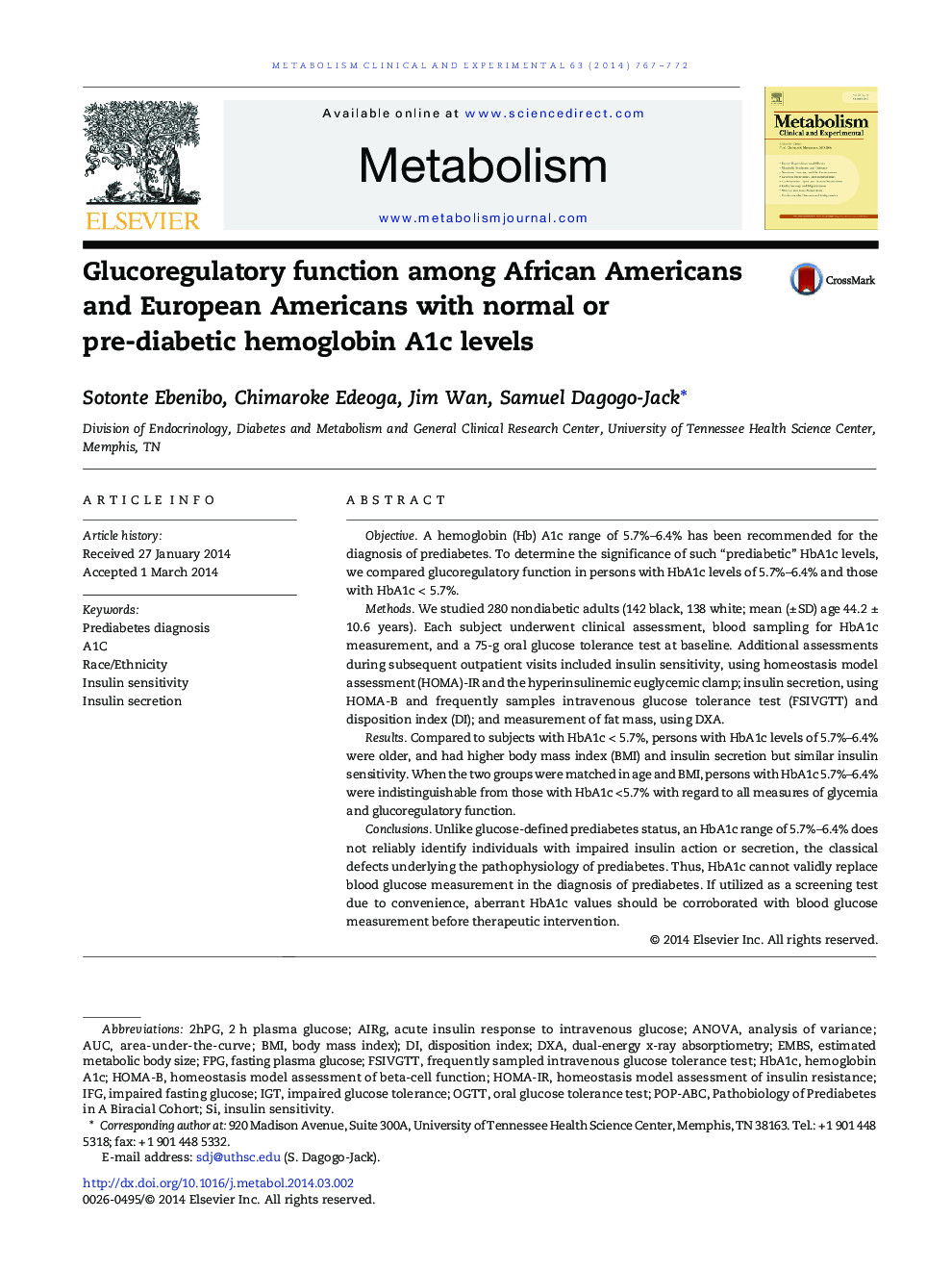| Article ID | Journal | Published Year | Pages | File Type |
|---|---|---|---|---|
| 2805559 | Metabolism | 2014 | 6 Pages |
ObjectiveA hemoglobin (Hb) A1c range of 5.7%–6.4% has been recommended for the diagnosis of prediabetes. To determine the significance of such “prediabetic” HbA1c levels, we compared glucoregulatory function in persons with HbA1c levels of 5.7%–6.4% and those with HbA1c < 5.7%.MethodsWe studied 280 nondiabetic adults (142 black, 138 white; mean (± SD) age 44.2 ± 10.6 years). Each subject underwent clinical assessment, blood sampling for HbA1c measurement, and a 75-g oral glucose tolerance test at baseline. Additional assessments during subsequent outpatient visits included insulin sensitivity, using homeostasis model assessment (HOMA)-IR and the hyperinsulinemic euglycemic clamp; insulin secretion, using HOMA-B and frequently samples intravenous glucose tolerance test (FSIVGTT) and disposition index (DI); and measurement of fat mass, using DXA.ResultsCompared to subjects with HbA1c < 5.7%, persons with HbA1c levels of 5.7%–6.4% were older, and had higher body mass index (BMI) and insulin secretion but similar insulin sensitivity. When the two groups were matched in age and BMI, persons with HbA1c 5.7%–6.4% were indistinguishable from those with HbA1c < 5.7% with regard to all measures of glycemia and glucoregulatory function.ConclusionsUnlike glucose-defined prediabetes status, an HbA1c range of 5.7%–6.4% does not reliably identify individuals with impaired insulin action or secretion, the classical defects underlying the pathophysiology of prediabetes. Thus, HbA1c cannot validly replace blood glucose measurement in the diagnosis of prediabetes. If utilized as a screening test due to convenience, aberrant HbA1c values should be corroborated with blood glucose measurement before therapeutic intervention.
